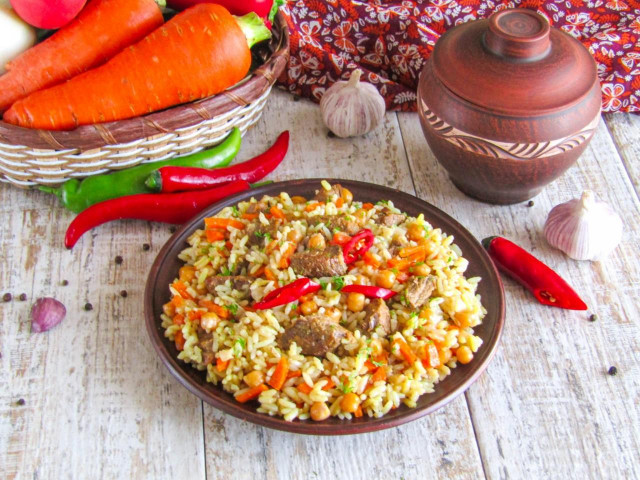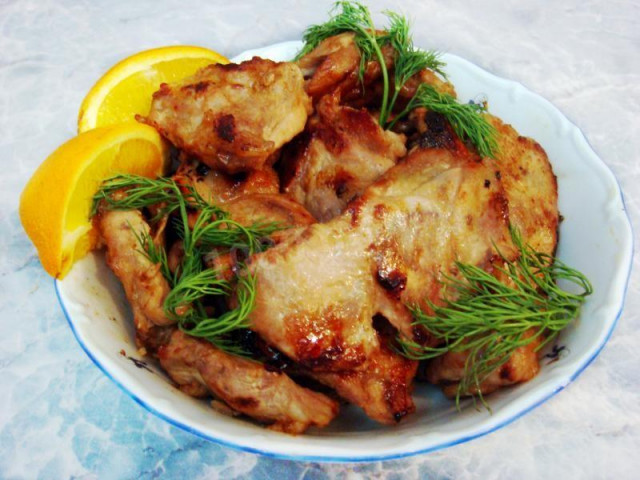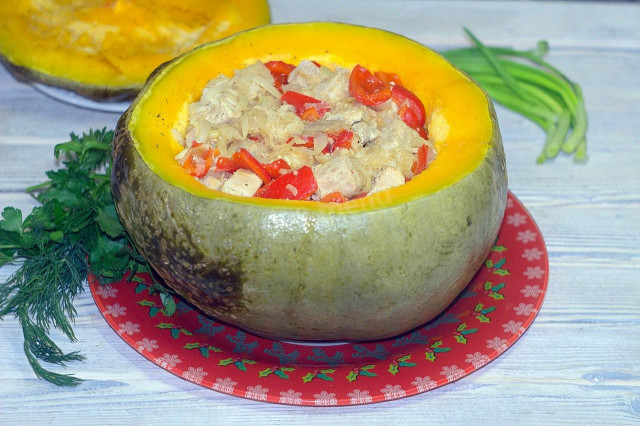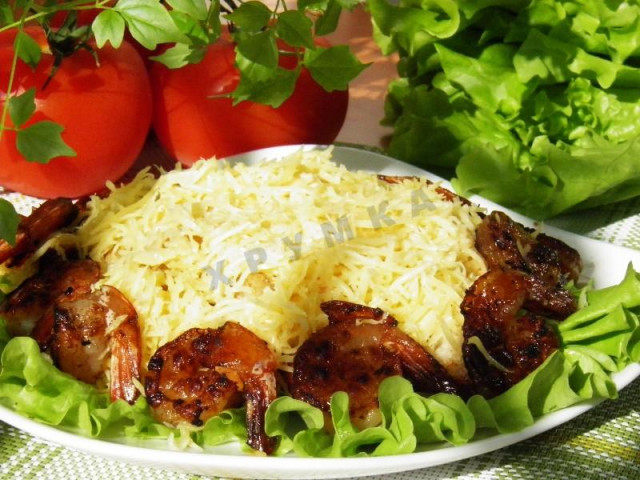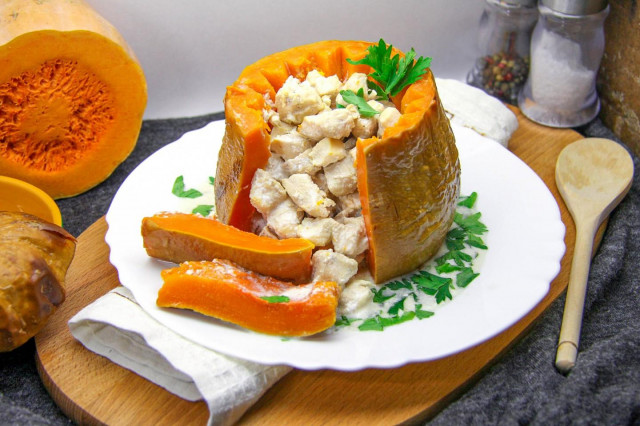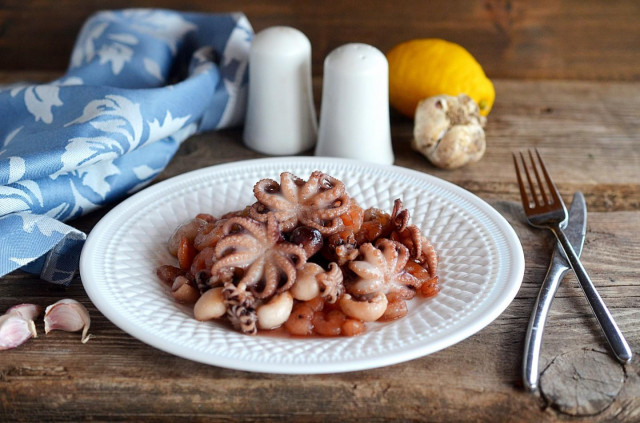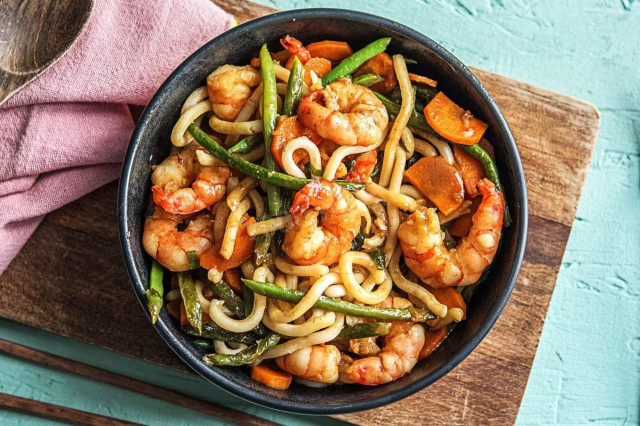Composition / ingredients
Step-by-step cooking
Step 1:
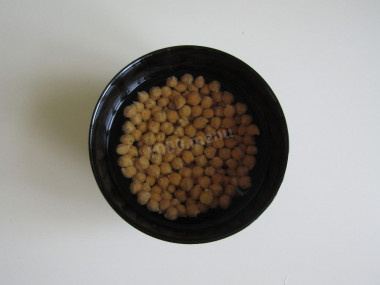
How to make Tajik pilaf in a cauldron? Prepare the products. Fill the chickpeas with cold water in advance and leave them to swell for at least five hours, preferably overnight.
Step 2:
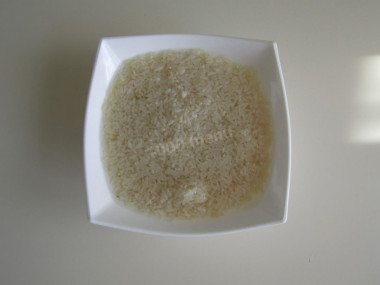
Also fill the rice with cold water and leave for an hour. Do not neglect this point, soaking will get rid of excess gluten and the pilaf will turn out crumbly. Take any rice that is not steamed — both round and long-grain will do.
Step 3:
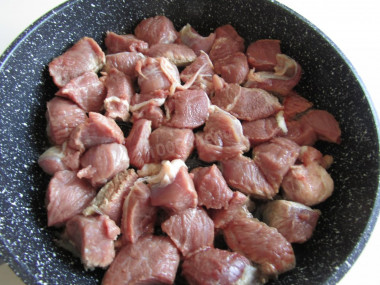
Wash the meat, dry it well and cut it into small pieces no larger than two centimeters. It is better to choose fresh meat. If you have frozen, defrost it by transferring it from the freezer to the refrigerator — this way it will retain juiciness and the correct structure. In a cauldron, heat the oil over high heat. Dip the meat into it, fry until golden brown.
Step 4:
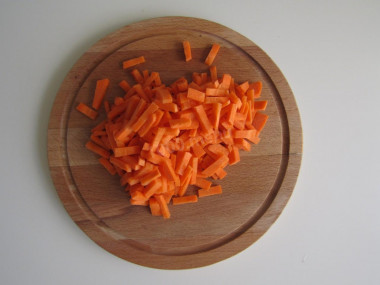
Cut carrots into strips, choose the length to your taste.
Step 5:
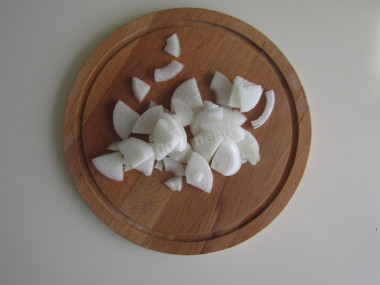
Cut the onion into half rings or, like me, a little smaller. As soon as the meat is browned, add the onion and carrot at the same time. Cook everything together until the carrots are half-cooked, all the same, over high heat. Then pour in cold water (about 250 ml, if necessary, add more), bring to a boil. After boiling, reduce the heat.
Step 6:
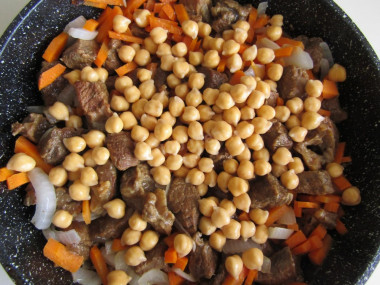
While the water is boiling, drain the water from the chickpeas, rinse it and put it in a zirvak (this is the basis of our pilaf: fried meat, onions and carrots). Cook everything together over low heat for about 20-30 minutes, until the meat is ready.
Step 7:
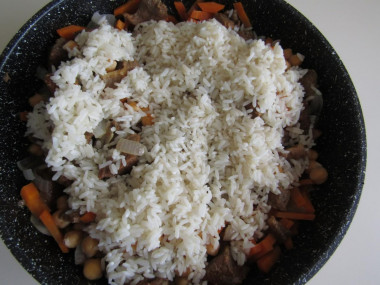
Rinse the rice, drain the water and put it in a cauldron. Then add salt, pepper and spices. Carefully pour hot water along the wall or by spoonful. Take enough water so that it covers the rice by 2-2.5 cm. Do not mix. Increase the heat and simmer the pilaf until the rice is ready. When the water is completely absorbed and the rice is ready, reduce the heat to a minimum and simmer the pilaf for another 15-20 minutes under the lid. Tajik pilaf is ready, bon appetit!
Wash the meat, be sure to dry it with a paper towel, otherwise excessive moisture will not allow it to fry - it will stew.
Important! To make rice dishes invariably delicious, read the article about the subtleties of choosing rice and the secrets of its preparation .
Any oils are useful only until a certain temperature is reached - the point of smoking, at which the oil begins to burn and toxic substances, including carcinogens, are formed in it. How to determine the roasting temperature and choose the best oil for frying, and which is better not to use at all, read here .
Caloric content of the products possible in the composition of the dish
- Onion - 41 kcal/100g
- Melted beef fat - 871 kcal/100g
- Fat beef - 171 kcal/100g
- Lean beef - 158 kcal/100g
- Beef brisket - 217 kcal/100g
- Beef - okovalok - 380 kcal/100g
- Beef - lean roast - 200 kcal/100g
- Beef shoulder - 137 kcal/100g
- Beef - ribs - 233 kcal/100g
- Beef - ham - 104 kcal/100g
- Beef - tail - 184 kcal/100g
- Boiled ham - 269 kcal/100g
- Beef corned beef - 216 kcal/100g
- Raw wild rice - 353 kcal/100g
- Brown raw rice - 360 kcal/100g
- Boiled brown rice - 119 kcal/100g
- White fortified raw rice - 363 kcal/100g
- Fortified boiled white rice - 109 kcal/100g
- White rice, steamed, with long grains raw - 369 kcal/100g
- Steamed white rice, boiled with long grains - 106 kcal/100g
- Instant dry rice - 374 kcal/100g
- Instant rice, ready to eat - 109 kcal/100g
- Fig - 344 kcal/100g
- Carrots - 33 kcal/100g
- Dried carrots - 275 kcal/100g
- Boiled carrots - 25 kcal/100g
- Zira - 112 kcal/100g
- Vegetable oil - 873 kcal/100g
- Barberry - 29 kcal/100g
- Salt - 0 kcal/100g
- Chickpeas - 364 kcal/100g
- Water - 0 kcal/100g
- Fresh frozen soup greens in a package - 41 kcal/100g
- Greenery - 41 kcal/100g

